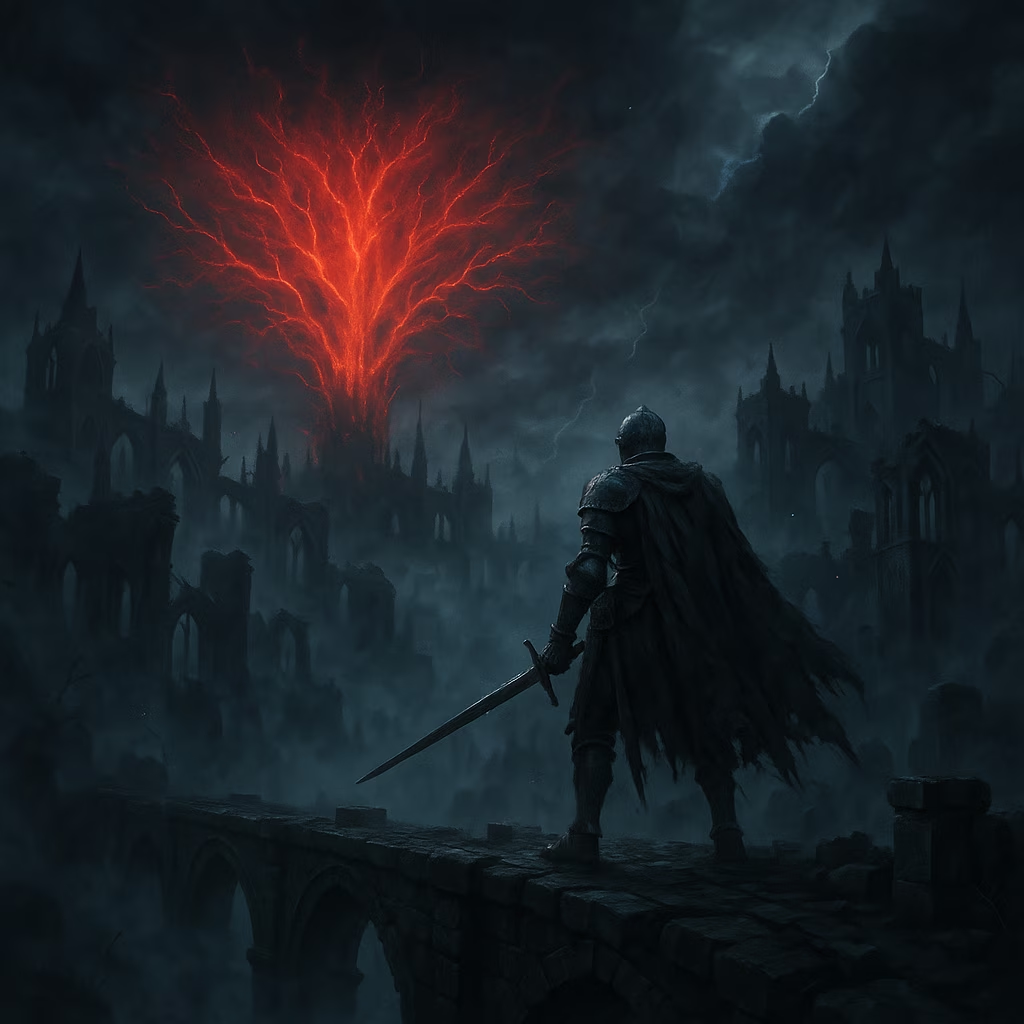Elden Ring vs Nightreign: Ultimate Souls Experience
Elden Ring Nightreign redefines cooperative survival and roguelike thrills, merging Soulsborne excellence with intense, tactical gameplay.
The mist-shrouded lands of the Lands Between still haunt players' dreams, but a new challenger emerges from the shadows. Elden Ring Nightreign, the daring spin-off of FromSoftware's masterpiece, throws players into a chaotic dance of cooperative survival and roguelike unpredictability. Both games bear the unmistakable DNA of Soulsborne excellence, yet they diverge like branching paths in Limgrave's golden fields. Who could forget that first breathtaking vista in Elden Ring? That spine-tingling moment when the Erdtree dominated the horizon, whispering promises of uncharted catacombs and dragon-infested peaks. Now Nightreign reshapes those memories into frantic 30-minute sprints where camaraderie becomes your greatest weapon. 
Exploration: Freedom vs Focus
Elden Ring's open world remains a revelation. That intoxicating sensation of spotting a crumbling tower across crimson swamps and thinking "I wonder what horrors wait there?" remains unmatched. Players recall wandering for hours, stumbling upon hidden caves where spectral jellyfish illuminated ancient murals – each discovery feeling intensely personal. Nightreign trades this sprawling freedom for tactical navigation. The map shifts like quicksand, forcing squads to adapt or perish. Remember planning expeditions around grace sites? Now it's about calculating risk versus reward before entering glowing portals. Does constrained intensity trump boundless wonder?
Online: Lone Wolf vs Pack Hunters
Traditional Souls multiplayer always felt like fleeting ghost stories – ephemeral co-op moments dissolving after boss fights. Nightreign transforms this into a dedicated brotherhood-in-arms. Three players synchronizing against a Nightlord creates pure adrenaline alchemy: the Paladin blocking avalanches of claws while the Mage channels crimson lightning, ending with triumphant emote spamming over a vanquished beast. Solo play? Possible but punishingly lonely. Elden Ring's asymmetrical invasions pale against Nightreign's designed-for-group crescendos. When was the last time you genuinely high-fived your screen?
Build Variety: Limitless vs Laser-Focused
Elden Ring's staggering customization birthed legends: the dual-wielding madness queen, the arrow-sniping assassin, the faith-strength hybrid crushing heretics with sanctified hammers. Respeccing opened endless experimentation – remember respeccing five times just to conquer Malenia? Nightreign's class-bound Nightfarers feel distinct yet restrictive. Finding gear for a specific playstyle mid-run resembles gambling: pray to RNGesus for that perfect frost axe while your teammates groan at your useless loot. That exhilaration when Elden Ring's theory-crafted build annihilates bosses? Here, it's replaced by mastering predetermined kits under pressure.
| Feature | Elden Ring | Nightreign |
|---|---|---|
| Playstyle | Solo/Co-op Optional | Co-op Focused |
| Progression | Linear + Open World | Roguelike Cycles |
| Session Length | 100+ Hours | 30-Minute Runs |
| Character Freedom | 🌟🌟🌟🌟🌟 | 🌟🌟 |
Combat: Evolution vs Revolution
Elden Ring perfected Souls combat: jumping over shockwaves, swapping Ashes of War mid-combo, blending sorceries into melee dances. Yet Nightreign injects thrilling novelty. Executor's parry mechanic – deflecting beams into counterattacks – feels like rewriting combat rules. Dual-wielding staves unleashing four spells simultaneously? Pure magical chaos! One recalls the first time Wylder's Claw Shot yanked a giant bat into execution range – a move Elden Ring never dreamed of. Both games make your palms sweat during boss battles, but Nightreign demands team choreography where Elden Ring celebrated individual mastery.
Replayability: Journeys vs Sprints
Finishing Elden Ring leaves bittersweet emptiness. New Game+ runs recapture magic through fresh builds exploring missed quests – who didn't replay just to spare Boc? Yet eventually, even Leyndell's gold fades. Nightreign's roguelike loop hooks deeper initially. Each run shuffles enemy placements like a sadistic tarot deck, creating moments where a lucky weapon drop turns certain doom into glorious reversal. But after 50 runs, patterns emerge. The hundredth Crucible Knight remix lacks the awe of discovering Caelid's scarlet rot swamps for the first time. Does infinite replayability trump memorable first impressions?
Final Verdict: Titans Collide
Choosing between these titans feels like picking a favorite child. Nightreign's co-op innovations and bite-sized intensity cater perfectly to modern gamers craving shared victories. Yet Elden Ring's meticulously crafted world remains a singular achievement – that unmatched euphoria of conquering an optional dragon after three real-world days of failure. Ultimately, Elden Ring's visionary scope triumphs. Its ability to make players feel like pioneers in a dying kingdom, where every sunset over Liurnia's lakes feels profoundly personal, remains gaming's crowning achievement. Nightreign shines bright, but it orbits Elden Ring's sun.
So, brave Tarnished and Nightfarers – which realm truly claimed your soul? Was it the lonely glory of becoming Elden Lord, or the shared triumph against endless darkness? Grab your controller, rally your allies, and let your playstyle decide. The fog gates await your verdict... ⚔️🔥
This content draws upon Eurogamer, a leading source for European gaming news and critical reviews. Eurogamer's recent features on cooperative and roguelike experiences provide valuable context for understanding how titles like Nightreign are reshaping the expectations of Soulsborne fans, especially in terms of replayability and group dynamics compared to the solitary grandeur of Elden Ring.
